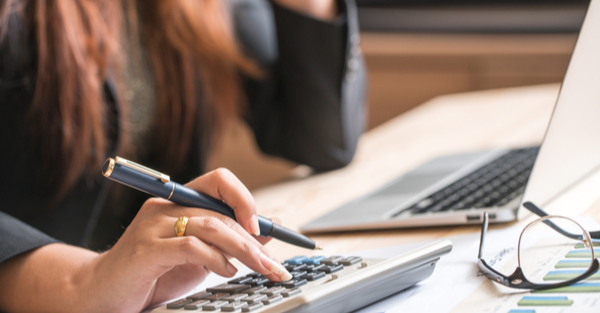5 Steps For Improving Your Credit Utilization Ratio
Improving your credit utilization ratio is one of the first steps toward raising your credit score. Whether you want to qualify for a new loan or negotiate lower interest rates on existing accounts, increasing the amount of untapped credit at your disposal can boost your reports.

Calculate Your Credit Utilization Ratio
You should assess your credit utilization ratio on both a per-account level and cumulatively if you want to make the biggest impact on your score. To calculate the rate for an individual account, divide the outstanding balance by the total credit available. For a picture of credit utilization across all of your accounts, add all of your outstanding balances and credit limits and divide total balances by the total limit.
Set a Credit Goal
Both FICO credit scores and VantageScore favor a credit utilization ratio of 30 percent or below, according to Experian, one of the three major consumer credit reporting agencies. FICO reports that exceptional credit score holders - those with a score of 800 or above - only use around 7 percent of their available credit.
For the average consumer, it's important to stay below 30 percent usage on individual cards and overall to maintain a high credit score and qualify for additional credit. According to VantageScore, the percentage of available credit used is a highly influential measurement with only payment history ranking higher as a key metric. For FICO, amounts owed on all accounts determine 30 percent of your score.
Spread Credit Utilization Across Accounts
Because credit utilization is examined at the account level, it is possible to have a negative mark on your credit report if you favor one account over the other. To combat this, examine your usage per account. If you use a credit card with a superior reward program heavily to earn more points, it may be costing you more than you earn in benefits. Consider spreading your spending across multiple accounts to keep every card under 30 percent utilization.
Alternatively, you can contact the provider of your favorite credit account and request a credit line increase that would place your average usage within the 30 percent range. For example, if you keep an average of $3,000 on your preferred credit card, increasing the limit from $7,500 to $10,000 would reduce your credit utilization from 40 percent to 30 percent.
Understand How Payments Impact Your Credit Utilization
If you pay off your cards regularly but still don’t see improvements in your credit score, try paying your cards more often. Some creditors report account updates at the end of your billing cycle while others report on a specific day of the month. A credit account you pay off monthly on the fifth of the month may look more heavily used because it sends data to the credit reporting bureaus on the first. To determine when a company is reporting your information, contact the credit issuer. You can then time payments to process before the reporting date, so your credit data shows the lowest credit utilization possible.
Pay Down Debt
Some credit problems require more than minor tweaks to your spending and payment behavior. If high debt percentages are keeping you from qualifying for a loan or leading to higher interest rates on existing accounts, you need to systematically reduce your debt. The U.S. Securities and Exchange Commission recommends you tackle accounts with higher interest rates first. To maximize the impact on your credit utilization ratio, make the largest payments you can afford without spreading yourself too thin.
If you're hoping to give you credit score a serious boost, combine these tips with the guidelines detailed in our article on credit cards for people with less-than-perfect credit.